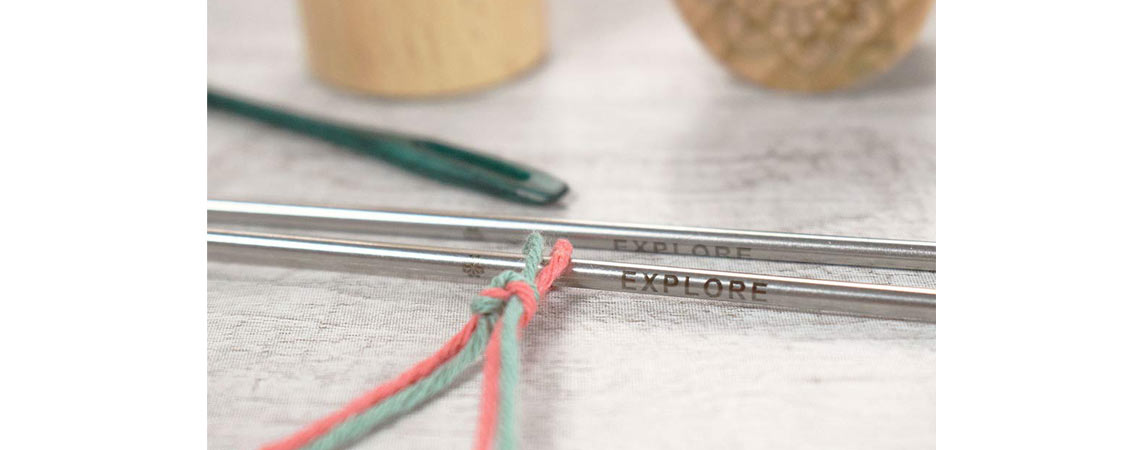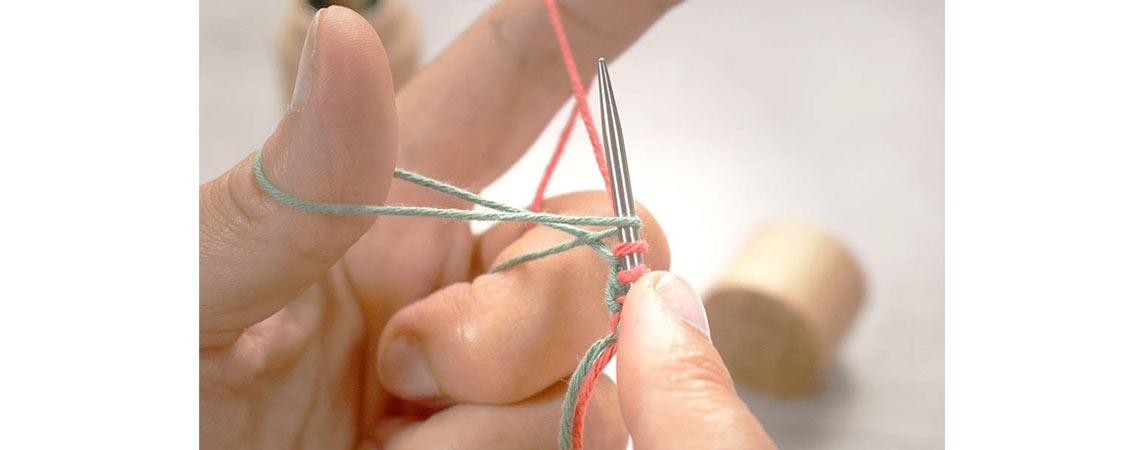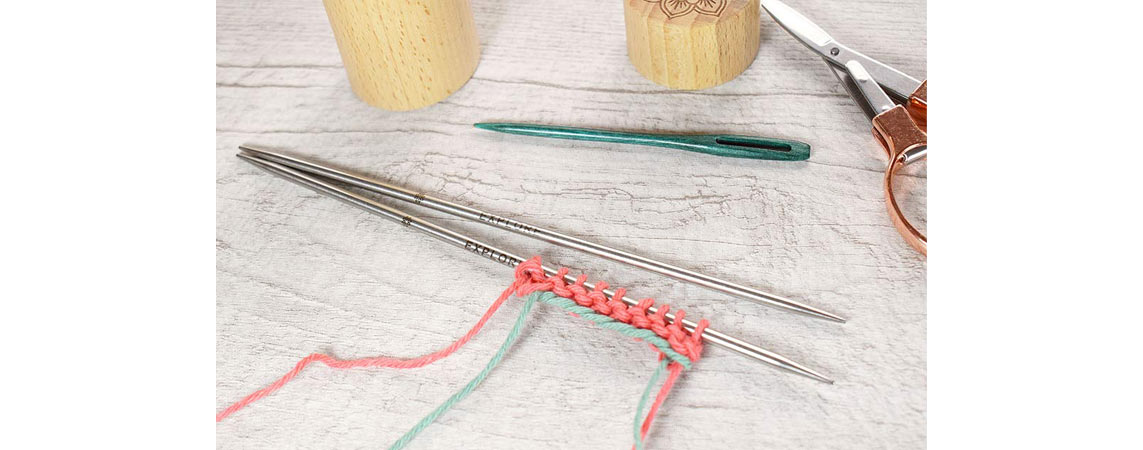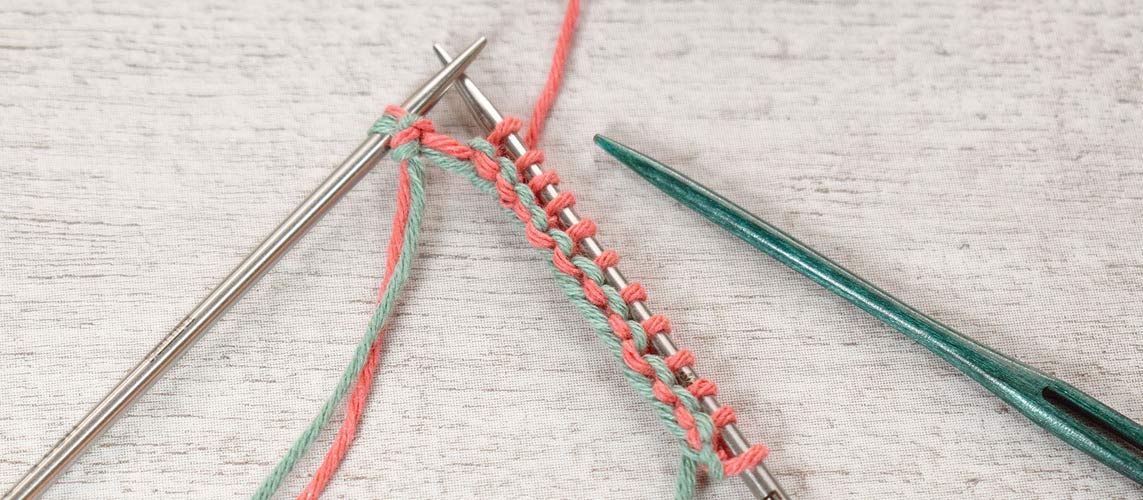Among all the techniques of casting on your stitches, the long-tail cast-on is known to be one of the most reliable and easy ones. It creates stretchy edges that are perfect for hats, socks or sleeves. And the long-tail method is always a good option, if you have to cast on extra stitches in the middle of your project, for example when knitting mittens or yoke sweaters.
That being said, there is one fly in the glorious ointment of the long-tail cast on. Those among you who have tried to cast on a lot of stitches, say 250, with this method, might already know. It is already implied in the name, and it is the long tail.
Though you can calculate the length of your tail you have to leave for your stitches, this does not always prove an easy task. If you overestimate the required tail length you are either dragging around a huge yarn end while you are knitting your piece, and if you underestimate, you do not have enough yarn left to accommodate all your stitches and will have to unravel and start all over again.
But do not despair. There is an easy way to have your long-tail cast on for large projects without needing to worry about tail length. In this post, we will show you how to long-tail cast on with no long tail at all, and it’s way less trouble than you might think. You simply use two strands of your yarn for your cast on. And this method works for all needle types, whether you are using your mindful double pointed, fixed or interchangeable circular knitting needles.
How exactly does it work?
The trick is to begin with using two different strands of yarn of the same color. You can either use two separate skeins or balls, or work with the beginning and the end tail of one and the same skein. In the images below, we have used two different colors of the same yarn for demonstration purposes, though.
- With a crochet hook or your fingers, tie a slipknot out of the two strands of yarn, leaving a good three inches of yarn which you will later need to weave in. You make a slipknot by creating a loop out of both yarn ends. Now you pass your thumb and index finger through this loop and grab the yarn attached to your skein. Then, pull the yarn through the initial loop to create your slipknot.

- Insert your knitting needle through the slipknot, then tighten the knot below the needle, ensuring the loop is loosely wrapped around your needle. The knot should neither be too tight, nor should it fall off the needle tip either.

- Proceed with your long-tail cast on as usual, using the two, different strands of yarn. With your left hand, wrap the yarn around your thumb and index finger, creating a triangle by holding the ends together in the middle of your palm with your other fingers. Insert your right-hand needle from under the thumb yarn, guide the yarn over your index finger loop, and draw the cast on stitch from your finger loop through your thumb.
- Repeat this process until you have cast on the required number of stitches, again, not counting the initial slipknot.

- Start knitting your first row. When you come to your two-yarn slipknot, let it slide over the needle tip (or needle end, if you work with straight needles), and undo it.
- You can now cut the strand of yarn, that is not your working yarn.
This method will leave you with a total of three short yarn tails that need to be woven in later. But compared to the hassle of having to undo your cast on stitches because of a miscalculated yarn tail, this is a pretty straightforward task. Besides, you always have our beautiful mindful darning needles to help you complete this business beautifully. And remember, learning new knitting techniques or ways to proceed can help to build your inner resilience. Read more about this topic here.
We hope you have enjoyed this little tutorial. Find more tips and knitting hacks here, such as how adding a lifeline to your knitting can help you knit more complicated patterns mindfully.












